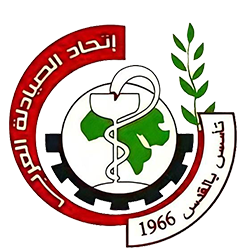You Will Learn
- Describe the differences between descriptive and inferential statistics.
- Identify different types of data (nominal, ordinal, continuous [ratio and interval]) to determine an appropriate type of statistical test on the basis of the sample distribution, data type, and study design.
- Describe strengths and limitations of different types of measures of central tendency (mean, median, and mode) and data spread (standard deviation, standard error of the mean, range, and inter-quartile range).
- Describe the concepts of normal distribution and the associated parameters that describe the distribution.
- Describe hypothesis testing, and state the meaning of and distinguish between p-values and confidence intervals.
- Interpret statistical significance for results from commonly used statistical tests.
- Describe the similarities and differences between statistical tests, and state how to apply them appropriately.
- Identify the use of survival analysis and different ways to perform and report it.
Description
Biostatistics is the application of statistical reasoning to the life sciences, and it is the key to unlocking the data gathered by researchers and the evidence presented in the scientific literature.
Biostatistics is an essential skill for every public health researcher because it provides a set of precise methods for extracting meaningful conclusions from data.
Those who complete the course will be able to read and respond to the scientific literature, including the Methods and Results sections, in public health, medicine, biological science, and related fields
Accreditations

Basics of Biostatistics
Some lectures will remain locked until you watch the previous ones.08:12
10:13
10:36
13:43
09:45
10:24
08:32
11:25
18:43
11:47
17:14
12:50
16:47
08:30
17:05
17:39
20:56
20:13
21:22
15:58
Recommended courses

Dr. Mohamed Saber Elsisi
Hospital Pharmacy From Basic To advanced
Last updated : 2021-05-31 11:23:40
Hospital Pharmacy From Basic To advancedThis course is highlighting the importance of hospital pharmacists in the Health care field, their responsibilities to deliver the right medication, within the right time & right dose to the right patient, through supporting the pharmaceutical knowledge of drug information...

Dr. Tarek Mostafa
Basic Community Pharmacy
Last updated : 2021-06-21 13:36:00
Basic Community PharmacyPharmacy training workshop consists of 10 consecutive sessions, in each session you will go through a detailed journey with a specific drug family, and learn about the different APIs under this family, and in each API you will know: the...

Dr. Tarek Mostafa
Advanced Pharmacy Practice
Last updated : 2021-06-23 15:07:15
Advanced Pharmacy PracticePharmacy training workshop consists of 10 consecutive sessions, in each session you will go through a detailed journey with a specific drug family, and learn about the different APIs under this family, and in each API you will know: the...

Dr. Abeer Adel
Pediatric Pharmacy
Last updated : 2021-09-28 11:11:03
Pediatric PharmacyPediatric Pharmacy ensures safe and effective drug use and optimal medication therapy outcomes in children up to 18 years of age.

Dr. Tarek Mostafa
OTC and Community Pharmacy Practice
Last updated : 2020-03-15 14:09:54
OTC and Community Pharmacy PracticeIn pharmacy training workshop you will go through a detailed journey with specific drug families, and learn about the different APIs under this family, and in each API you will know: the mechanism of action and the OTC dose for...



